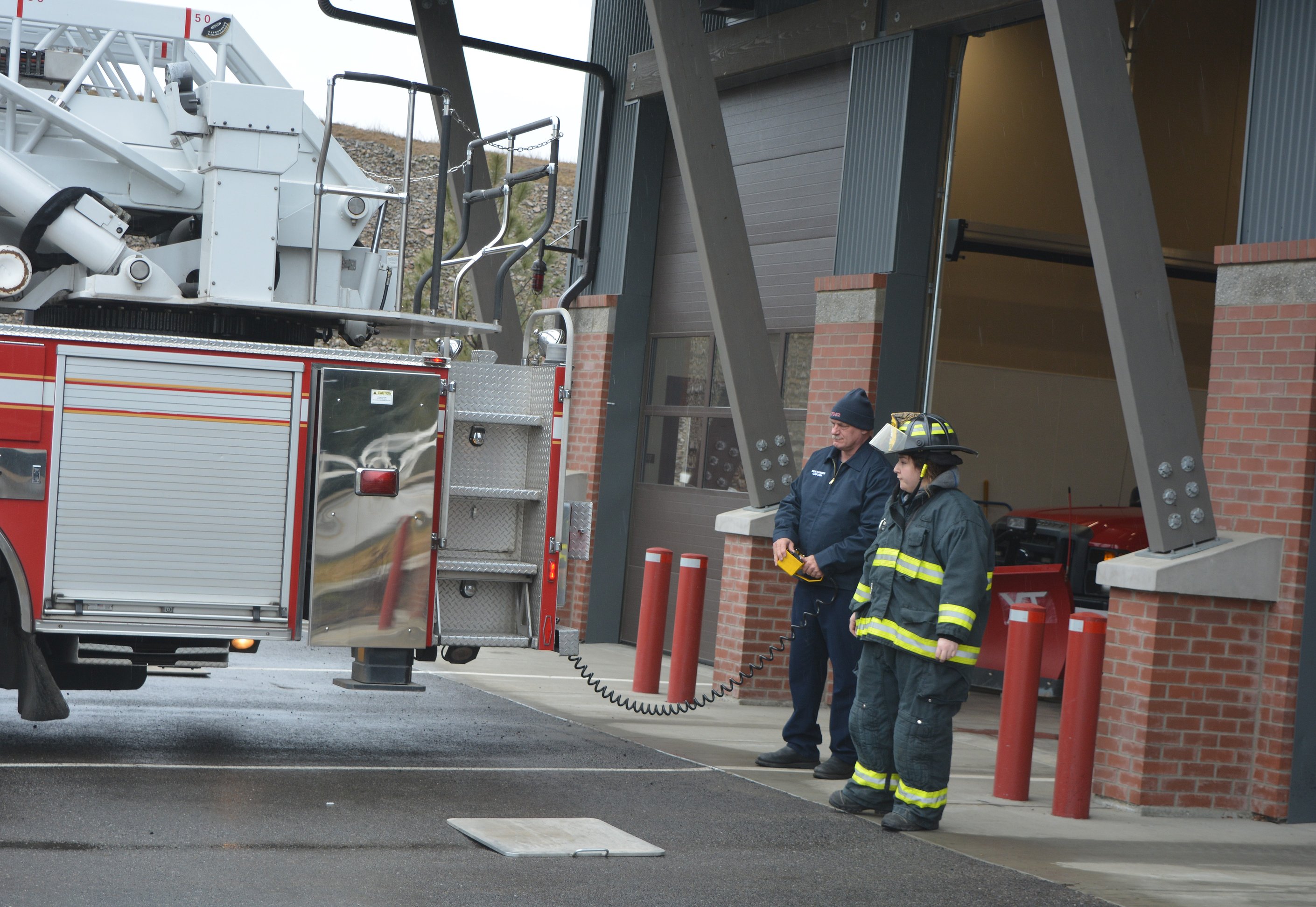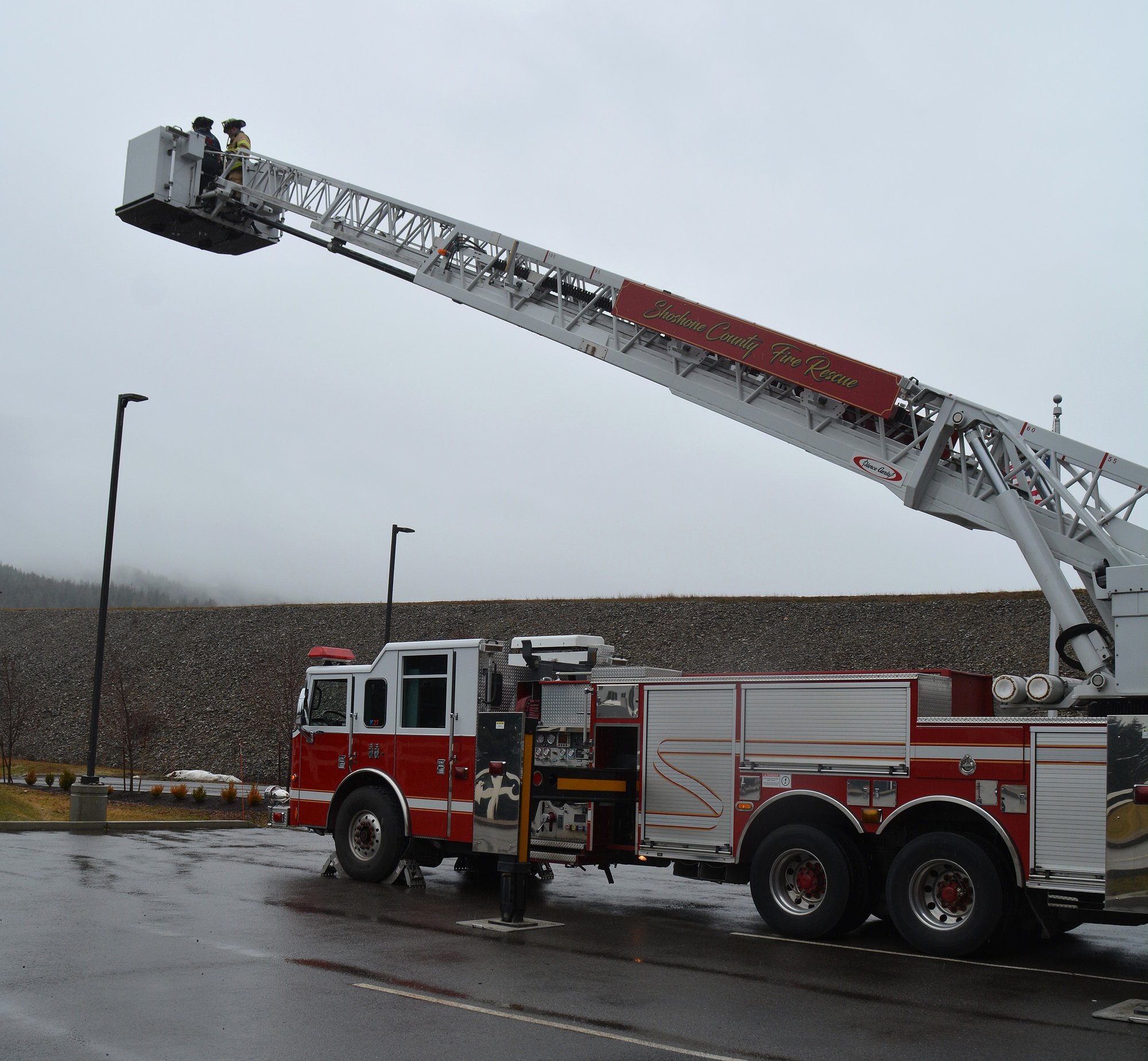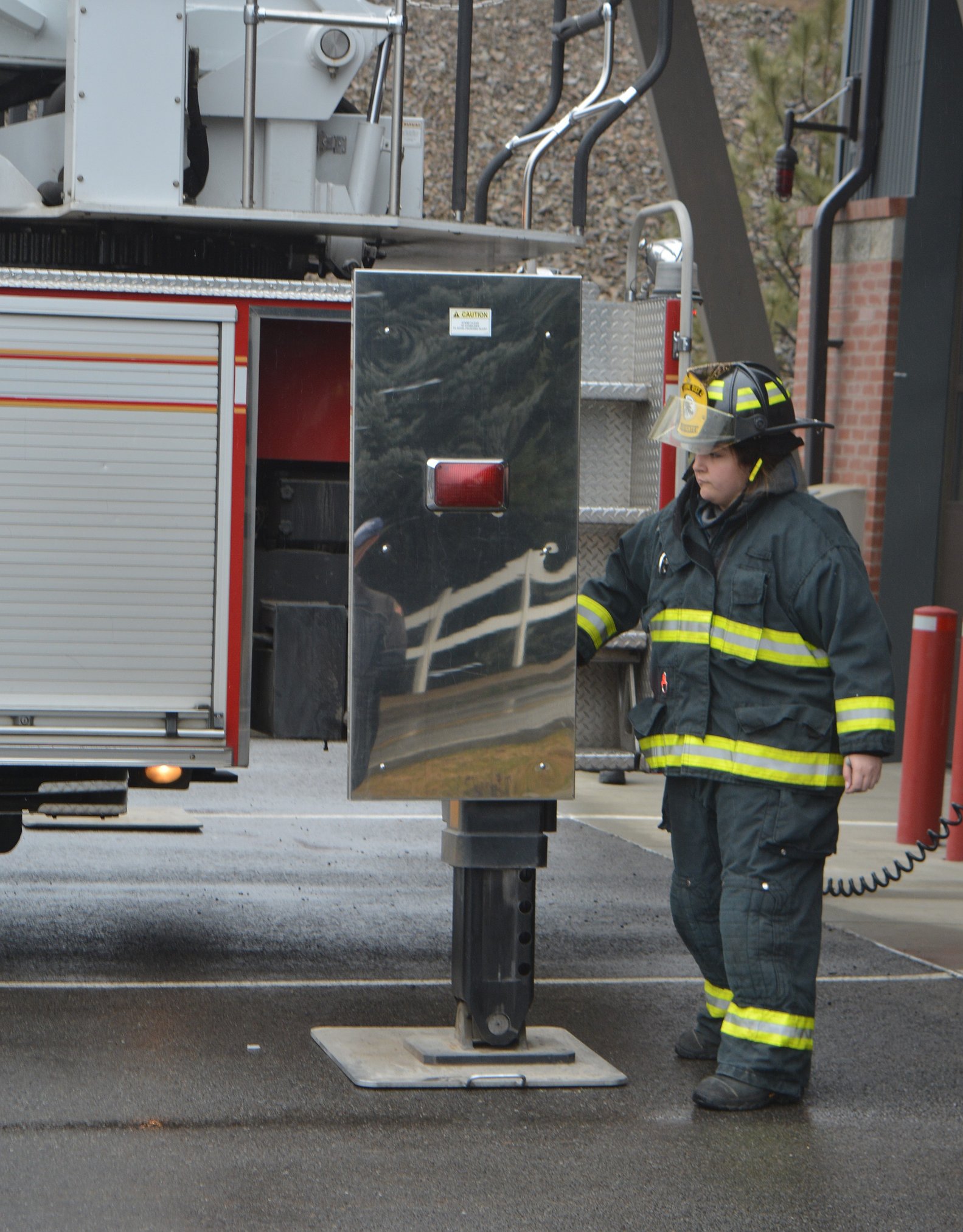Fire trucks and ladders
CAROLYN BOSTICK | Hagadone News Network | UPDATED 1 year, 10 months AGO
Carolyn Bostick has worked for the Coeur d’Alene Press since June 2023. She covers Shoshone County and Coeur d'Alene. Carolyn previously worked in Utica, New York at the Observer-Dispatch for almost seven years before briefly working at The Inquirer and Mirror in Nantucket, Massachusetts. Since she moved to the Pacific Northwest from upstate New York in 2021, she's performed with the Spokane Shakespeare Society for three summers. | February 16, 2024 1:00 AM
KELLOGG — What’s the difference between a fire truck and a fire engine?
Though the terms may seem interchangeable to non-firefighters, the vehicles serve very different functions.
Fire engines are constructed to carry gallons of water and pump water from a hydrant, fire trucks are meant to carry ladders and special rescue equipment.
Shoshone Fire District No. 2’s new quint truck, however, combines aspects of both of the fire apparatus models, serving multiple purposes.
Its primary use will be as a ladder truck, extending 100 feet toward structures, capable of rotating 360 degrees to carry out fire suppression.
Fire chief Scott Dietrich said the crew purchased the equipment from Kootenai County Fire and Rescue as a sealed bid and received the truck in June, but the truck just entered service this week after outfitting the rescue vehicle with emergency equipment.
“This is a 100-foot ladder truck and it’s the first of its kind in Shoshone County,” Dietrich said.
The 2004 quint truck came at a $221,000 price tag, compared to $1 to $1.5 million that a brand-new ladder truck costs. Refitting the truck with rescue equipment cost an additional $60,000 and an additional seven months to join the Shoshone fleet.
Captain Bob Hansen said an old “snorkel” truck that was used to combat the McConnell Hotel fire and other structures sparked in the blaze in 2017, but that was the last rescue vehicle with ladder truck capabilities they had previously relied on.
“We’ve been looking for a ladder truck for quite a while before we found this one. The snorkel was just getting so old, it wasn’t that safe anymore,” Hansen said.
Dietrich said the plan is to employ the vehicle to be run by the off-duty crew in the event of a multi-story fire.
The quint truck is ready to be deployed for service in Pinehurst, Kellogg, Osburn and Wallace and was recently used to train at Silver Mountain Resort in the event of emergency gondola evacuations for the lower cars.
“This is useful not only for access, but for fire suppression and rescue operations for those higher heights. It’s not a quick response, it’s heavy and it has to travel down the roads, but it’s a much needed response. Up until this point, we didn’t have any ability to reach the roof level of multi-story buildings,” Dietrich said.
Modern quint trucks like Shoshone’s contain a pump along with a tank, hose ground ladders and an aerial ladder.
 Bob Hansen operates the controls for the new ladder truck for Shoshone County Fire District No. 2 as Averie Kinsey observes. The truck is now available for multi-story calls in the Silver Valley.
Bob Hansen operates the controls for the new ladder truck for Shoshone County Fire District No. 2 as Averie Kinsey observes. The truck is now available for multi-story calls in the Silver Valley.
 Abe Hanna and Averie Kinsey deploy Shoshone County's new ladder truck to its 100-feet span at Shoshone Fire District No. 2.
Abe Hanna and Averie Kinsey deploy Shoshone County's new ladder truck to its 100-feet span at Shoshone Fire District No. 2.ARTICLES BY CAROLYN BOSTICK

Post Falls plans to add park
3.6-acre site expected to be completed next year
After back and forth about benefits to both city residents and the nearby subdivision developer, Post Falls City Council has approved an agreement to move ahead with the creation of development of a new park by the Crowne Reserve subdivision.

N. Idaho churches ready for Christmas
Christmas is full of traditions from church denomination to denomination, but for Rev. Mariusz Majewski at St. Thomas the Apostle Catholic Church, it comes down to one symbol: the nativity crèche.

Commissioners add time to Bayview dock lease
Sides say there are details to iron out
Kootenai County Commissioners voted Tuesday to amend the termination of the docks lease with Lakes Highway District, adding 60 days, rather than expiring as originally planned on Jan. 1, 2026.


